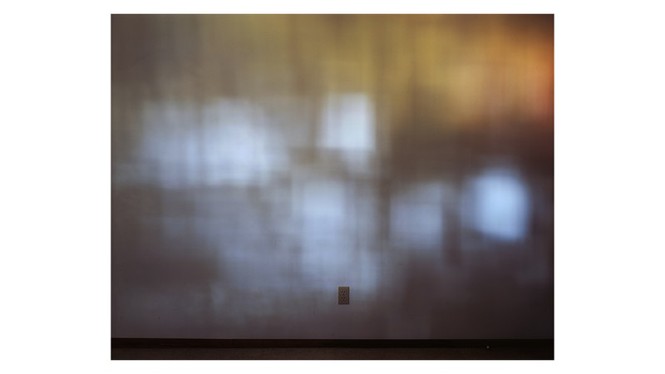You Can’t Write Your Way Out of Grief
The feeling can’t be cured—but sometimes, the words of others can help.

This is an edition of the Books Briefing, our editors’ weekly guide to the best in books. Sign up for it here.
The writer Cody Delistraty’s mother died when he was in his early 20s, and the loss stranded him in an interminable fog of grief. Over the next decade, he embarked on a winding journey to alleviate this feeling: laughter therapy, a prescription reading list, Zen meditation. He details this futile search for a remedy in his new book, The Grief Cure. But his investigation was misguided all along, Linda Kinstler writes in her review. “To be a person is to inhabit a permanent condition of mourning for everyone and everything that has been irrevocably lost,” she explains, “and to try to live on—and live well—all the same.”
First, here are three new stories from The Atlantic’s Books section:
- Five books for people who really love books
- “T at 42,” a poem by Annie Liontas
- The magic of old-growth forests
I found myself moved by Kinstler’s argument: that loss, which is inevitable, makes you into something like a “lifetime member of the world’s population of mourners.” Delistraty attempts to reject that designation by examining, quantifying, and researching grief. But ironically, this only makes him more similar to others who have dealt with it: Writers have tried to navigate the feeling through words probably for as long as we’ve been able to write. These efforts usually fail to show them—or their readers—a way out of mourning. Still, some authors (Kinstler mentions Marcel Proust and Joan Didion, for instance) have managed to address death in a way that feels both beautiful and true.
Because The Atlantic is broadly interested in the human experience, we have published a fair amount of memorable work about grief and death. I’m still thinking about my colleague Ross Andersen’s eulogy for his father, and Colin Campbell’s account of losing his two teenage children in a car crash. I cherish the articles that helped me make sense of a particularly heavy time, the spring of 2020, when people were dying of COVID, loved ones were very far away, and the world felt like it was coming apart. That was grief, Amitha Kalaichandran wrote. And, of course, the most powerful story about mourning I’ve read here is Jennifer Senior’s Pulitzer Prize–winning article about Bobby McIlvaine, a young man who died on 9/11, and the people he left behind (which was later published as a book entitled, simply, On Grief). Each of us is “born bereft, birthed into a cascade of past and future losses,” Kinstler writes, and each of us must individually figure out how to bear that weight. Sometimes, though, the words of others can help.
In Search of a Nonexistent Cure
By Linda Kinstler
In his new book, Cody Delistraty chronicles his almost decade-long journey to heal his grief—only to discover that there is no remedy.
What to Read
The Confidence Game, by Maria Konnikova
“The true con artist doesn’t force us to do anything; he makes us complicit in our own undoing,” Konnikova writes in The Confidence Game. “He doesn’t steal. We give. He doesn’t have to threaten us. We supply the story ourselves. We believe because we want to, not because anyone made us.” Her nonfiction book delves into the psychological underpinnings that make people so vulnerable to cons. Each chapter takes the reader step-by-step through a confidence scheme, covering what makes someone likely to become a grifter of this type, how they identify their marks, what methods they use to ultimately fleece targets (and why those methods work), and, in most cases, how shame keeps victims from telling others they were scammed. Konnikova delves into scientific studies that show why methods adopted by scammers are so effective, and peppers those findings with examples of con artists whose skills exploit these human foibles and the marks who fall for them. The Confidence Game is a thorough, insightful investigation into why these scams exist—and why they’ll always be around, in one form or another. — Vanessa Armstrong
From our list: What to read to understand how people get tricked
Out Next Week
???? Empire’s Son, Empire’s Orphan, by Nile Green
???? Pink Slime, by Fernanda Trías, translated by Heather Cleary
???? The Body Alone, by Nina Lohman
Your Weekend Read

The Deep Connection Between Life and Fire
By Ferris Jabr
Fire was warmth when there was no sun and light when it was not day. An evening campfire became a focal point of conversation and storytelling. A torch or an oil lamp turned the formerly dark contours of a cave into a canvas for myth and memory. A combination of hunting and cooking with fire allowed our species to evolve and nourish much bigger, denser, and hungrier brains with nearly three times as many neurons. Fire is arguably the single most important catalyst of human evolution—the furnace behind our intelligence, technology, and culture.
When you buy a book using a link in this newsletter, we receive a commission. Thank you for supporting The Atlantic.
Explore all of our newsletters.










